When you buy products via links on our website, we might receive an affiliate commission. Learn more
5 Companion Plants to Boost Your Tomato Harvest (and 2 to Avoid)
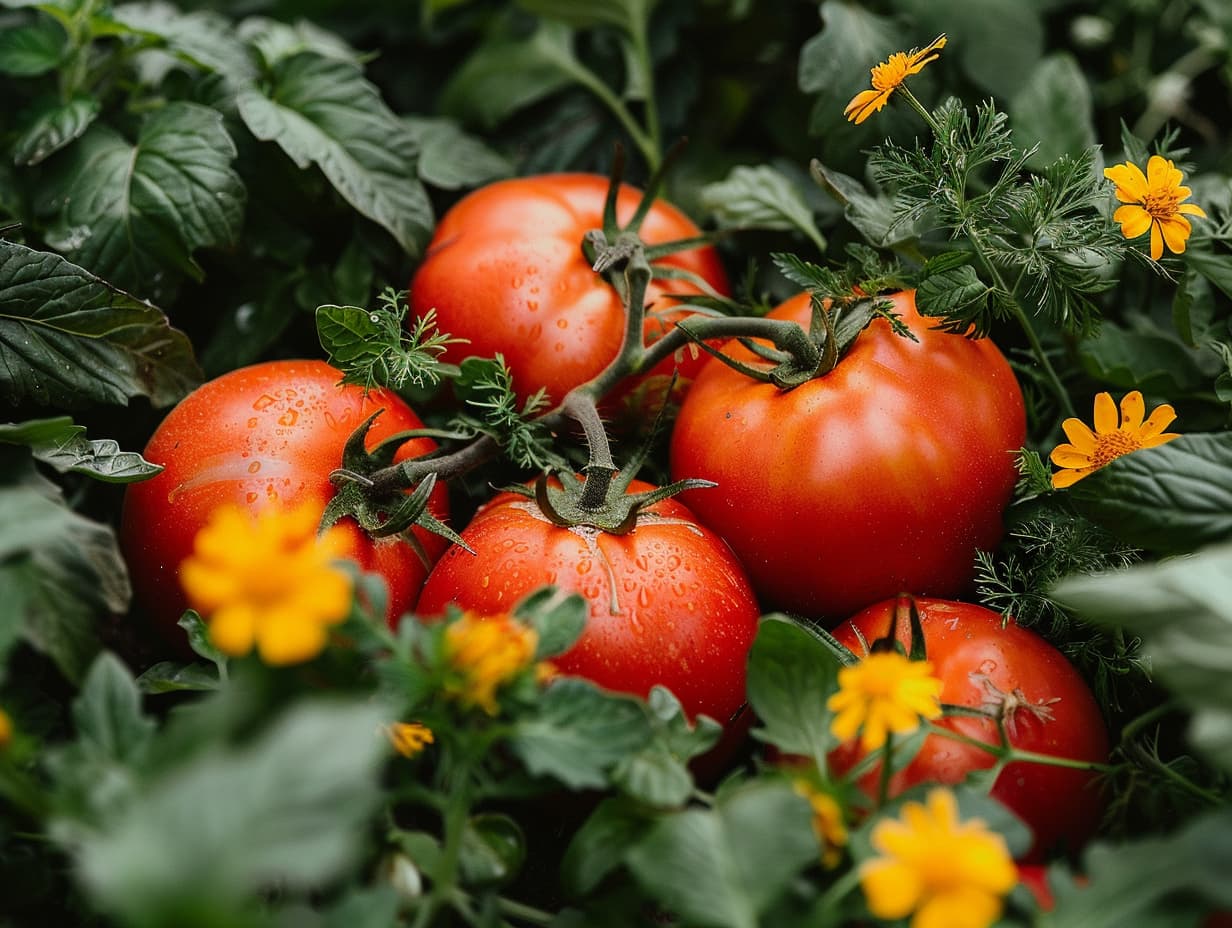
Growing your own tomatoes is incredibly rewarding, providing a delicious bounty that can be used in countless dishes. However, tomatoes can be susceptible to various pests and diseases that can hinder your harvest.
One effective way to enhance your tomato yield and protect your plants is through companion planting. By strategically pairing tomatoes with certain plants, you can create a more resilient and productive garden.
In this post, we'll explore five scientifically-backed companion plants that will boost your tomato yield and two plants you should avoid to ensure a successful harvest.
5 Companion Plants to Supercharge Your Tomato Harvest
- Marigolds
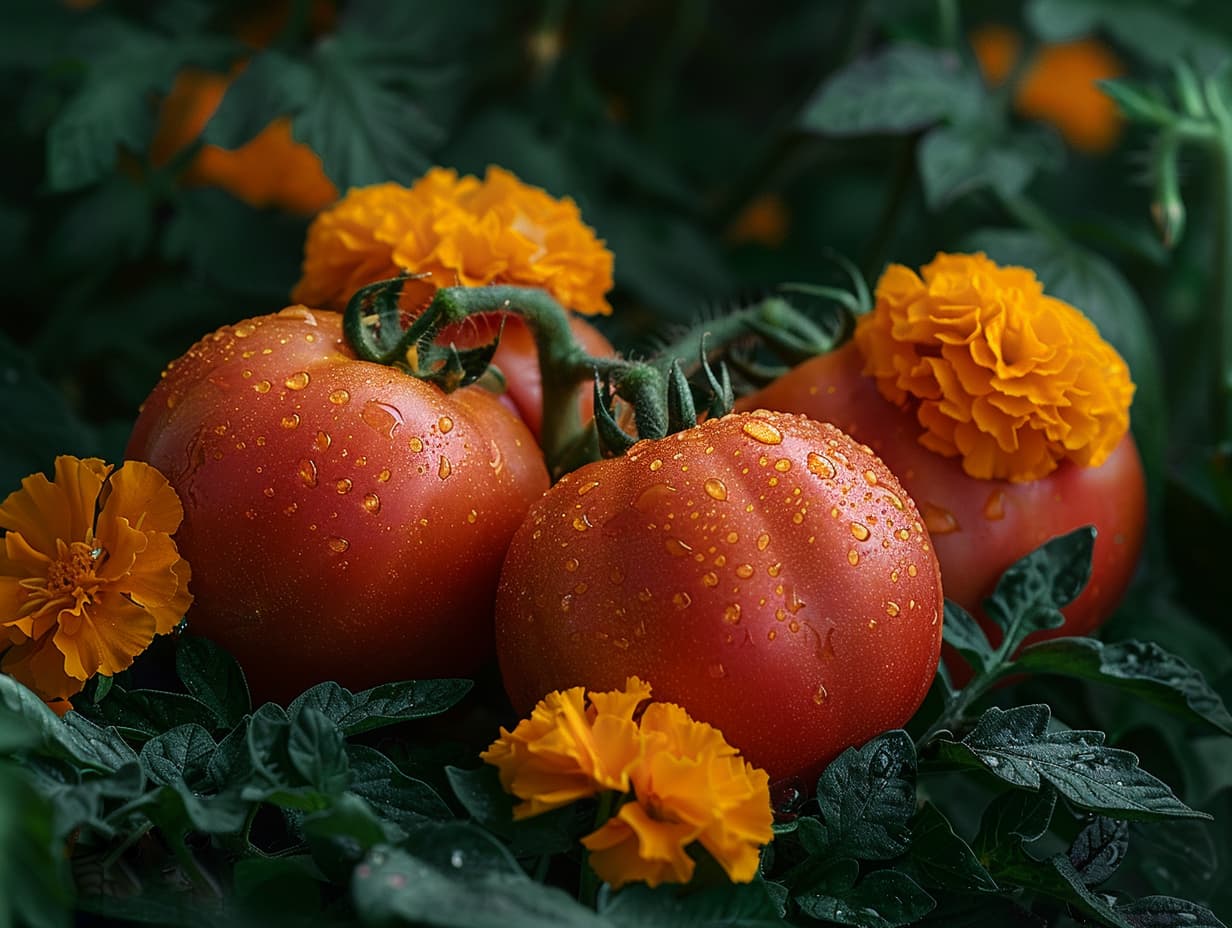
Marigolds are vibrant, cheerful flowers that offer more than just aesthetic appeal to your garden. These flowers are known for their ability to protect tomatoes from harmful nematodes — microscopic worms that attack tomato roots, leading to reduced plant vigor and yield.
They release a chemical called alpha-terthienyl, which disrupts the life cycle of nematodes, preventing them from reproducing and causing harm.
The Tangerine variety of marigolds is particularly effective against nematodes. Additionally, marigolds attract beneficial insects like ladybugs and hoverflies, which prey on common tomato pests such as aphids.
- Garlic, Onions, Chive
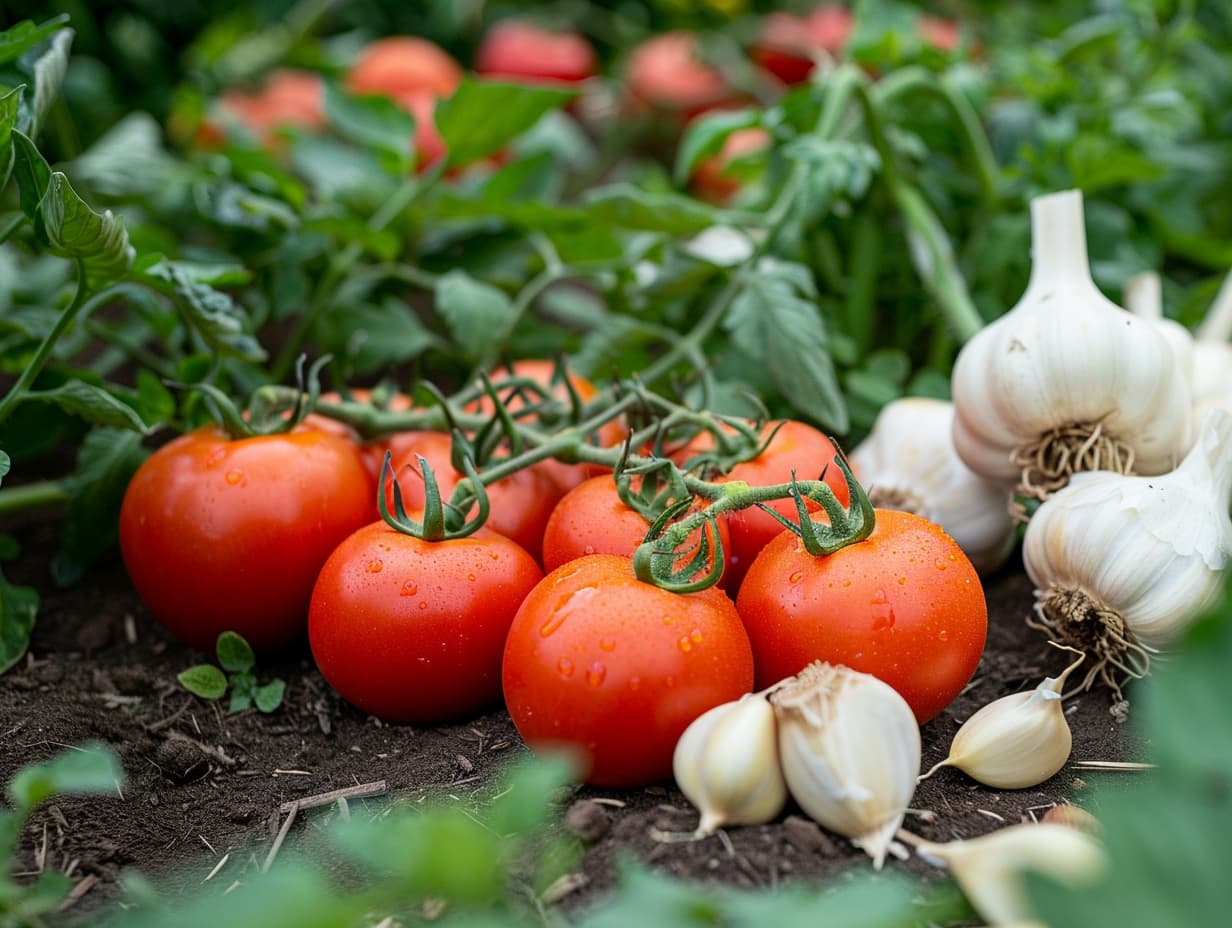
Alliums, including garlic, onions, and chives, are excellent companions for tomatoes due to their strong odor, which repels a variety of pests.
For example, spider mites — tiny arachnids that suck the sap from tomato leaves, causing them to yellow and wither — are deterred by the pungent smell of alliums.
Planting garlic, onions, or chives near your tomatoes creates a natural barrier against these pests. Moreover, alliums have antifungal properties, helping to reduce the risk of fungal infections like powdery mildew.
This dual action makes alliums invaluable in maintaining the health and productivity of your tomato plants.
- Cowpeas
Cowpeas, also known as black-eyed peas, are not just a nutritious crop; they also serve as an effective trap crop for stink bugs.
Stink bugs are notorious for scarring and discoloring tomatoes, making them less marketable and reducing their overall quality. By planting cowpeas nearby, you can attract stink bugs away from your tomatoes.
The cowpeas act as a decoy, luring the pests to a less critical area of your garden. This strategy helps protect your main tomato crop while still producing an additional harvest from the cowpeas.
- Parsley
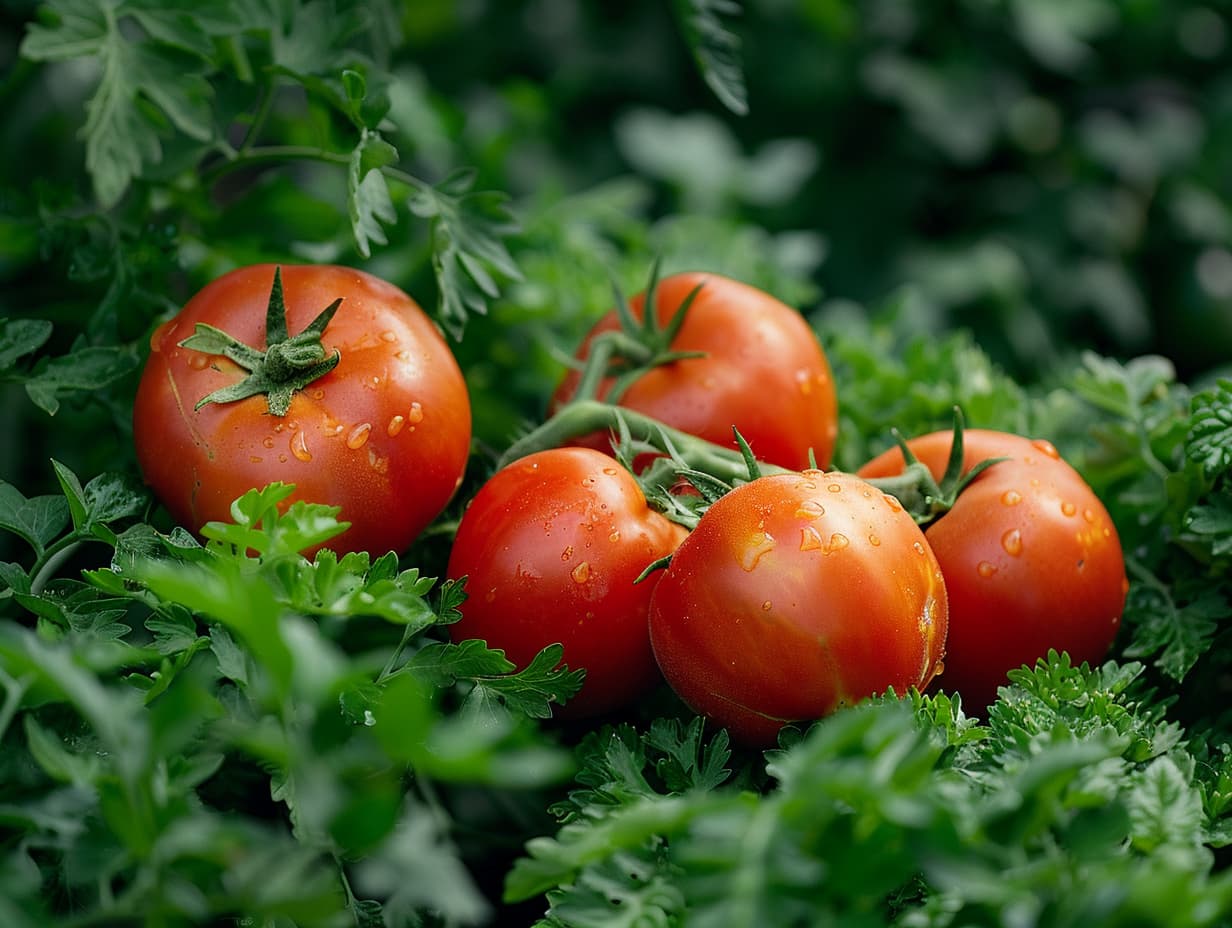
Parsley is often grown for its culinary uses, but it also plays a crucial role in integrated pest management. Parsley attracts beneficial insects such as hoverflies and parasitic wasps.
Hoverflies, for instance, lay their eggs near aphid colonies. When the larvae hatch, they feed on the aphids, reducing their population and minimizing damage to your tomato plants.
Parasitic wasps, on the other hand, lay their eggs inside tomato hornworms, a common and destructive tomato pest. The wasp larvae then consume the hornworm from the inside out, effectively controlling their numbers.
By planting parsley, you create a habitat that supports these beneficial insects, leading to a healthier and more productive tomato garden.
- Basil
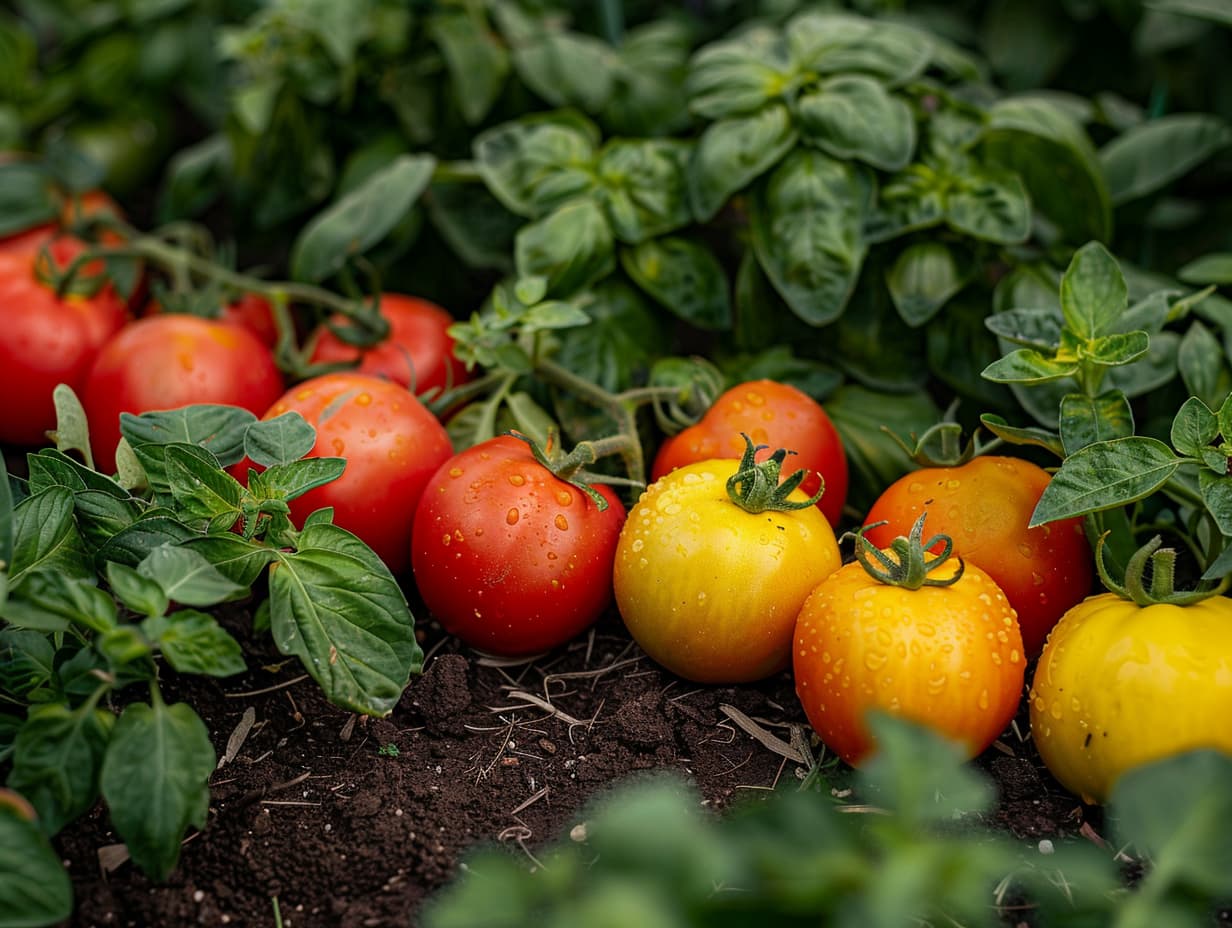
Basil is a versatile herb that not only enhances the flavor of your dishes but also benefits your tomato plants in multiple ways.
The fragrant leaves of basil confuse the tomato hornworm moth, making it difficult for them to locate tomato plants to lay their eggs.
This reduces the number of hornworm larvae that can damage your tomatoes. Additionally, basil attracts bees, which are crucial for pollination. Improved pollination results in better fruit set and higher yields.
If you’re growing basil for culinary purposes, regularly pinch off the flower buds to prevent the leaves from becoming bitter and to encourage bushier growth.
Plants to Avoid
While companion planting can offer numerous benefits, certain plant combinations can be detrimental to your garden. It's important to be aware of these problematic pairings to avoid potential issues.
- Potatoes
Both tomatoes and potatoes belong to the nightshade family, which means they share similar vulnerabilities to diseases such as blight.
Planting them close together increases the risk of disease transmission, potentially harming both crops. Blight, a fungal disease, can quickly spread from infected potatoes to tomatoes, causing severe damage and reducing your harvest.
To minimize this risk, it's best to keep tomatoes and potatoes at least 15 feet apart in your garden. Rotating their planting locations each year can also help break the disease cycle and promote healthier plants.
- Black Walnut Trees
Black walnut trees produce a substance called juglone, which is released from their roots and can inhibit or kill certain plants, including tomatoes.
Juglone interferes with the plant's ability to absorb water and nutrients, leading to stunted growth or even death. If you have black walnut trees on your property, ensure that your tomatoes are planted at least 50 feet away from the drip line of the trees.
This distance helps prevent the roots of the tomato plants from coming into contact with the juglone, safeguarding your harvest.
